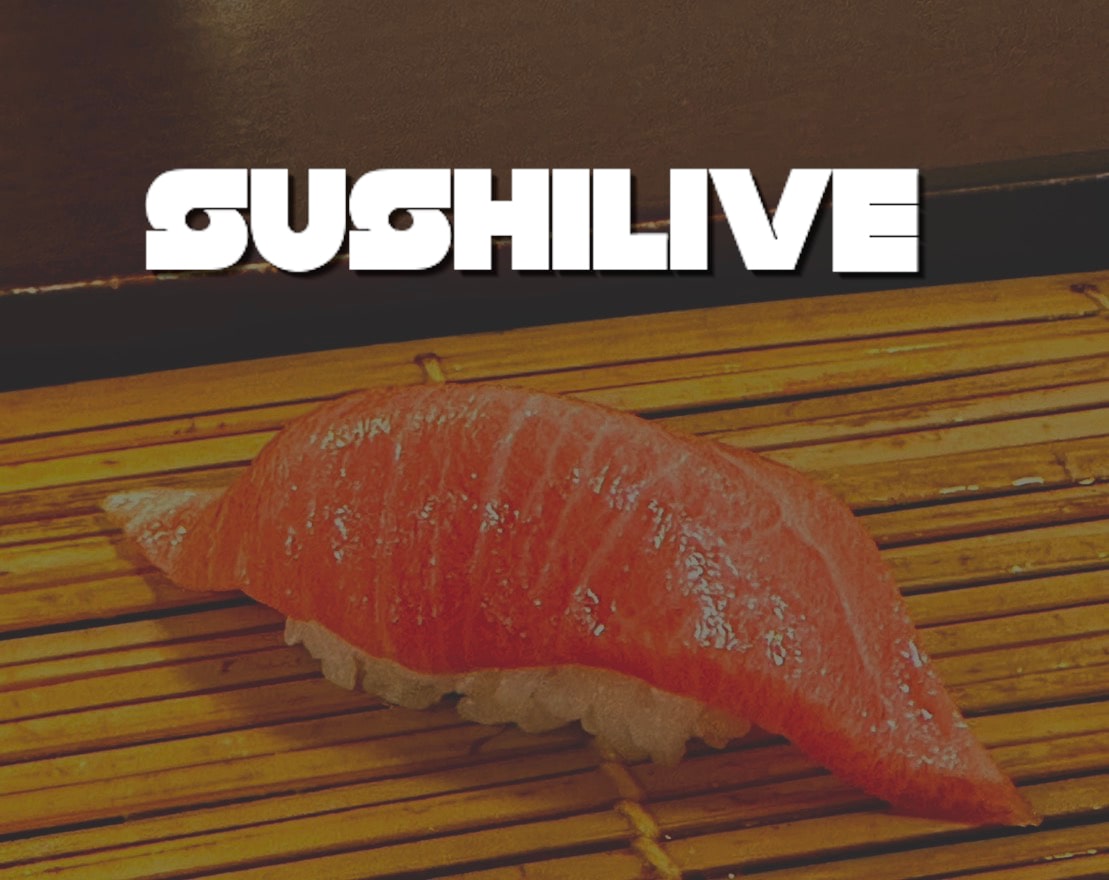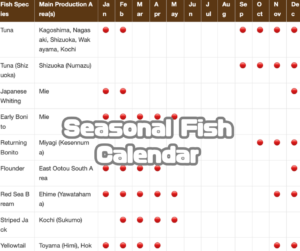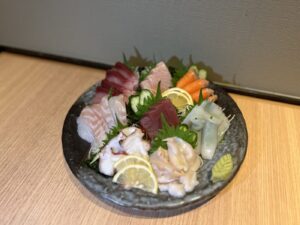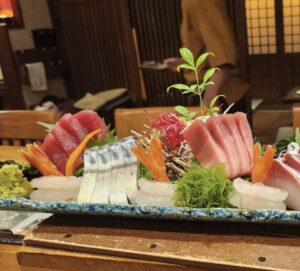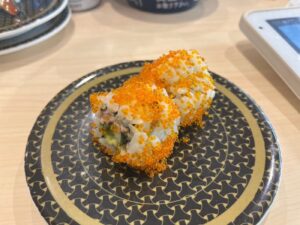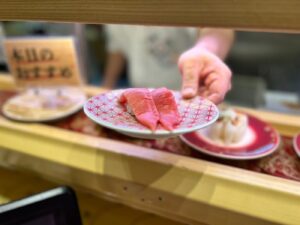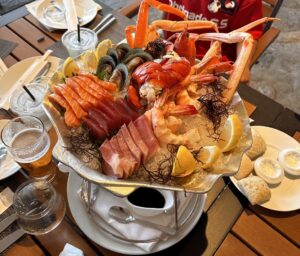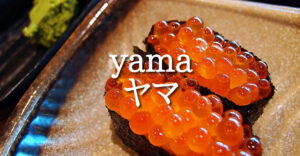It is still fresh in our minds that in 2013, Japanese cuisine was registered as an intangible cultural heritage by UNESCO, and it became a hot topic in Japan. Speaking of Japanese food, there are representative Japanese dishes such as “sushi”, “tempura”, and “soba”, but it seems that “sushi” is especially popular overseas. Traditional Japanese sushi is known as “Sushi” and is enjoyed by people all over the world in styles that match the food cultures of each country.
When it comes to Japanese sushi, which sushi ingredients do foreigners like and which sushi ingredients do they dislike? This time, we conducted a survey of foreigners who have been in Japan for less than six months to find out about the sushi situation of foreigners!

■This is definitely the No. 1 favorite topic for foreigners!
The most popular sushi topping that took first place was salmon, which is also loved by Japanese people. Respondents made the following comments:
“I like salmon because it has a crisp texture and natural sweetness.There are many sushi restaurants in Taiwan, and sushi is a food that is as familiar to Japanese people as it is to Japanese people. …Japanese sushi is more delicious (lol)” (Taiwanese/20s/Male)
“Basically, I don’t like raw fish, but I like salmon because I’m used to eating it.It has a strong flavor and a lot of fat, unlike other fish.Bland fish doesn’t taste good, so I like it. (Canada/20s/Female)
“The appeal of salmon is its fat. After eating it, the feeling of fat remaining on your tongue is irresistible! Eating a lot can make your stomach feel heavy, but when that happens, you can pick up some Japanese gari to feel refreshed. .The combination of rich salmon and sweet and sour gari is the best!” (China/Female/20s)
All respondents seemed to like the “taste” of salmon. In addition to the rich flavor, the mellow fat is said to be addictive.
In addition, the key point is the sense of security that comes from using ingredients that are familiar to you in your home country. Even people who try sushi in Japan for the first time tend to start with the salmon or tuna (tuna) they had in their home country.
Also, although salmon is now a standard ingredient at conveyor belt sushi restaurants, it is only recently that salmon sushi has become available in Japan. In the 1980s, when Norwegian fisheries workers visited Japan, imports of “Norwegian seafood”, including salmon, began. It is said that around this time, the custom of eating raw salmon began to spread in Japan.
Until then, Japan had never imported seafood and had never used salmon as an ingredient in sushi. Perhaps for this reason, many Edomae sushi restaurants do not serve salmon as a sushi topping. From a Japanese perspective, the king of sushi toppings is tuna, but foreigners seem to prefer salmon.
■“Eggs” are very popular among foreigners who don’t like eating them raw!?

“Tamago” ranked No. 2. How does yellow and black sushi, which Japanese children love, appear to foreigners?
“I love egg sushi! I can’t eat raw fish, so when I go to a Japanese sushi restaurant, I always order egg or Inari. It’s cheaper than sushi, so I end up ordering too much (lol).” (China/Teen/Female)
“I think the slight sweetness of the egg goes well with the slightly sour rice. Also, I think egg sushi is wrapped in nori, and that seaweed is a nice accent. The aroma spreads in your mouth and increases your appetite.” (Italy, 20s, Female)
“Japanese eggs surprised me! In my home country, I had only eaten “Fried eggs,” so this was my first time to have Tamagoyaki that was grilled that thick. Moreover, it is sweet and delicious, and surprisingly goes well with rice. It’s my favorite flavor of Japanese sushi.” (American/Teen/Male)
Tamagoyaki can be prepared in a variety of ways, including fried eggs, omelets, and scrambled eggs. In Japanese sushi toppings, “tamago” refers to rolled vinegared rice topped with “dashimaki tamago,” a traditional Japanese egg dish, and wrapped in seaweed.
In this survey, many foreigners say they cannot or have never eaten raw fish due to differences in food culture. It seems that they like to eat toppings that do not use fillets. Among them, the one that was well-received by foreigners was the sushi topping using Japanese “dashi-maki tamago.”
It’s cheaper than other sushi toppings, and it’s sweet and filling, so some say their children will enjoy it. I’m sure it’s a universal fact that children like eggs as a sushi topping.
Here we will also introduce some answers from the minority regarding sushi ingredients that foreigners like.
“Even at sushi restaurants in Japan, I only eat “California rolls.” Maybe I have that impression because I’m an American, but when I ask the master to “leave it to me,” he usually gives me California rolls. .But it’s better in Japan.I guess the masters are better.” (American/Male, 30s)
“‘Fusion sushi’ is very popular in Indonesia, and I love it too. There’s sushi rolls using avocado, and there’s also fried sushi where the sushi is battered and deep-fried. In Japan, most sushi is classic, so If you know of a restaurant where you can eat fusion sushi, please let me know (lol)” (Indonesia, 20s, male)
A minority opinion is that they prefer the “creative sushi” that is popular in their home country to Japanese sushi. As you all know, a lot of “creative sushi” based on traditional Japanese sushi has appeared overseas, and it seems that it is becoming popular as “the food of the home country.”
As a Japanese person, I’m happy that Japanese-born sushi is popular all over the world, but I have mixed feelings when someone says, “I prefer the sushi from my home country to the original.” hey……!
■Some people don’t like the way it looks!?The No. 1 thing they hate is “Ikura”

Next, we announced the results of a survey on sushi ingredients that foreigners dislike. Surprisingly, the jewel of the sea, “Ikura”, took first place.
“I love salmon, but I can’t eat too much of it. In the first place, I don’t want to eat too much! After all, these are fish eggs!” (Russian/Teen/Male)
“I don’t like the taste and appearance of salmon roe…I like the texture when it pops in your mouth, but I don’t like the fishy smell that lingers afterward. It’s disgusting to think that I’m eating fish eggs.” (China/20s/Female)
“It’s a little disgusting that the small particles are crowded together. The taste is fishy and I don’t like it…” (Taiwanese/Teen/Male)
While salmon is a very popular sushi topping, its egg, salmon roe, is unpopular among foreigners. It seems that many people are not only concerned about the taste and texture, but also the appearance, with many saying, “The sight of the grains crowded together is disgusting.”
In addition, I was surprised to find that many people asked, “Do Japanese people like to eat fish eggs?” In Japan, there is a custom of eating fish eggs such as salmon roe, “cod roe,” and “herring roe,” but it is not often eaten overseas.
You can hear Japanese people saying, “Even caviar is made from sturgeon eggs!” However, in any case, salmon roe (ikura) is not very popular with foreigners.
Ranked in second place was the high-class sushi topping, “sea urchin.” The specific answers obtained are as follows.
“I hate the fishy smell of sea urchin! The texture is so runny that I don’t even feel like eating it. Do Japanese people really like this kind of taste?” (American, 20s, male)
“I don’t like sea urchin because it has a strong bitter taste. Fresh sea urchin may be delicious, but it’s a luxury item and I can’t eat it easily. At least, the sea urchin I ate in Indonesia tasted terrible.” (Indonesia/20 teenagers/male)
“I once had sea urchin sushi in China, but it smelled like gasoline so I couldn’t eat it. I haven’t eaten Japanese sea urchin yet, so maybe it’s delicious…” (China) /20s/female)
Sea urchin is a luxury ingredient that is essential to Japanese cuisine, and it is also one of the ingredients that Japanese people have different tastes about. In this survey, many foreigners said they didn’t like the “taste” and “smell,” but to be honest, I was wondering, “Maybe they’ve never eaten really fresh sea urchin?” is.
Some people have said, “Japanese sea urchin is so expensive that I can’t eat it…”, but if you have the money, you should definitely try fresh domestic sea urchin!
■Is raw food a problem for foreigners?

In this survey, “salmon” was ranked as the number one favorite sushi topping by far. Next on the list was “egg”, which Japanese children love, and I was surprised that standard toppings such as “tuna” and “squid” did not make the list.
On the other hand, most of the sushi items that they dislike are “ikura” and “sea urchin”, and there are people who are reluctant to eat raw fish roe, and there are many foreigners who “hate sushi itself.”
Also, the minority opinion that “I prefer the creative sushi from my home country to Japanese sushi” was very impressive. Although there have been mixed opinions regarding creative sushi from overseas, it can be said to have achieved great success, as it has served as an opportunity to spread Japan’s “Japanese food culture.” In any case, I want more people around the world to try traditional Japanese sushi. This sushi survey made me think so.

